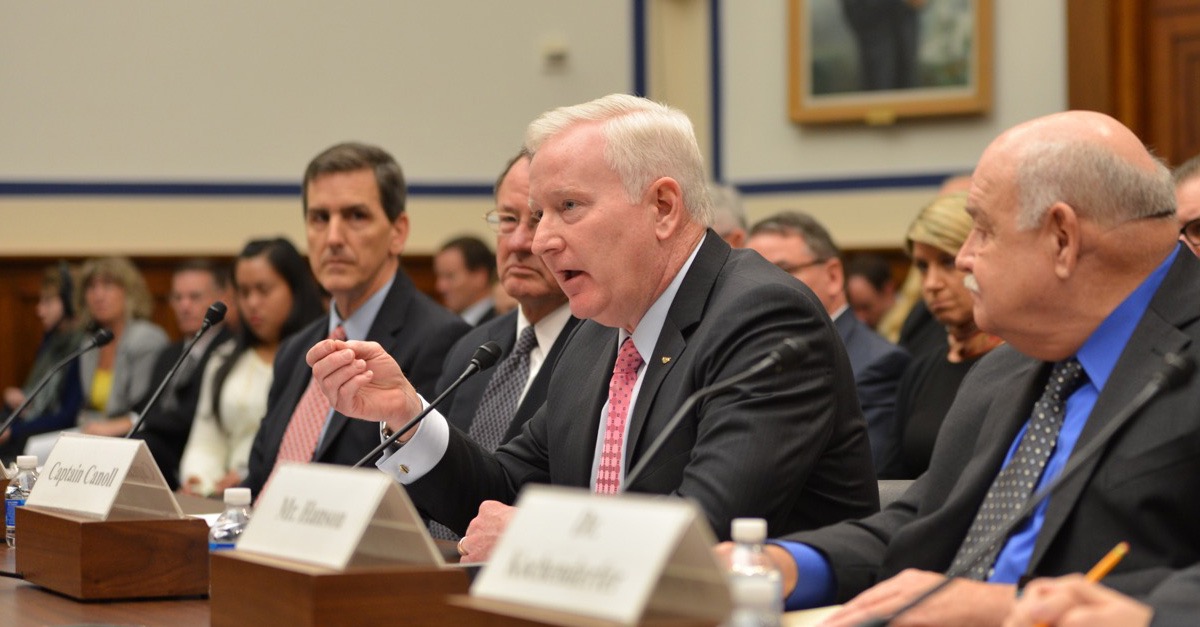Today, I testified [oral|written] before the U.S. House of Representatives Aviation Subcommittee and urged lawmakers to direct the FAA to regulate unmanned aircraft systems (UAS) operated for recreation and hobby.
With the anticipated sales of one million UAS during this year’s holiday season, we must address all UAS operations immediately. The FAA is making some progress in ensuring the safe integration of UAS into our nation’s airspace system, but more is required. Just look at this summer’s release of the hundreds of FAA reports from pilots on UAS encounters. In these reports, pilots across the country described seeing a UAS while in flight, often during takeoff and landing, the most critical phases of flight.
In order to continue to track these instances, ALPA has been encouraging pilots who encounter a UAS to follow their company guidance and, where applicable, file a report with the FAA. There is a dedicated page on ALPA’s website, available to anyone, that helps pilots understand whether the encounter is likely reportable as a near mid-air collision and provides the links and information needed to submit the necessary information.
ALPA has also been working with various stakeholders on a four-part plan aimed at safely integrating UAS. By focusing efforts on education, registration, technology, penalties, and enforcement, we believe our country can take advantage of the economic opportunities offered by UAS while maintaining safety. ALPA’s recommended action plan has four elements:
1 ) Education—Anyone who plans to fly these UAS must understand the aircraft, the airspace, and the other aircraft that share it. For those who want to do the right thing, there are resources such as the “Know Before You Fly” campaign, of which ALPA is a supporter. But we also need to reach at the point of sale those individuals who may not yet appreciate the danger.
Individuals flying these UAS for recreation must adhere to the FAA guidelines, including any minimum age requirements, maintaining line of sight, and flying under 400 feet.
2) Registration—Gathering contact information about the UAS purchaser will not only allow authorities to immediately identify the owner, but it will also drive home the serious nature of operating these UAS.
3) Technology—If these UAS operate in airspace intended for airliners, or if they could unintentionally end up there, airline pilots need to be able to see them on cockpit displays, controllers need to see them on their radar scopes, and the UAS must be equipped with active technologies that ensure it is capable of avoiding a collision with manned aircraft.
If regulations restrict these UAS from operating in particular locations, the UAS must have technology that cannot be overridden to limit its operations. Penalties for those who deliberately violate them must be significant.
4) Penalties and enforcement—UAS pilots must be properly trained and understand the consequences of exceeding the operating limitations and possible malfunctions. Anyone deliberately flying a UAS recklessly should be subject to criminal prosecution, and anyone operating a UAS who unintentionally deviates from rules and limitations should be subject to civil penalty.
We believe that with this action plan, our country can capitalize on the economic opportunities offered by these UAS while maintaining safety. ALPA stands ready to help the FAA develop these regulations as part of realizing our shared goal of ensuring the safety of air transportation for all who depend on it.


